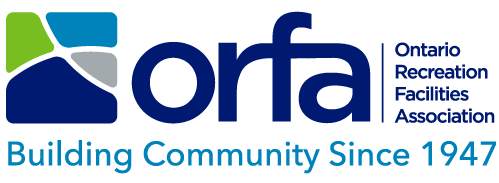- ORFA Home
- Resource Centre
- Technical Corner
- 50 Plus Years Later Facility Measurements Are Still a Mix Bag of Metric and Imperial
Technical Corner
50 Plus Years Later Facility Measurements Are Still a Mix Bag of Metric and Imperial
June 6, 2022
I was in grade 9 when Canada switched to the metric system. At that time, the schools (teachers) were unprepared for the change and throughout my entire time in high school we were in transition. Fifty years later, I have yet to actually make the change. The U.S., Myanmar and Liberia are the only countries that still use the imperial system day to day, although the U.S. system has some slight differences. Most Canadians use a mixture of measurements to function that adds cost and at times, confusion to function and operations. So, where did the metric system originate?
In 1790, France conceived the metric system as a means of streamlining commerce. Since the French scientists wanted to be as precise as possible and enable others to emulate their process, they decided to derive the measurements from the earth’s circumference - a well-known dimension at the time. To do this, the scientists selected a longitudinal segment of the earth that ran between the northern and southern parts of France, and carefully divided it to create the meter. The metric system, also known as the International System of Units (SI), is a system of measurement that is built on three main units: meters, liters, and grams. Since the metric system is a base 10 system of measurement, each succeeding unit of length, mass, or volume is 10 times larger than the previous one. The names for these units are the combination of a prefix which indicates the size of the unit and a base which tells you whether the unit is measuring length, mass, volume. The resulting measurement system, which is now known as the metric system, was extremely innovative and attractive to the international community. However, since the metric system was rooted in a portion of French land, the United States decided not to adopt this system at the time. In 1975, Congress passed the Metric Conversion Act, which declared metric as the preferred system of the United States, and the U.S. Metric Board was created to implement the conversion. Canada noted the pending change of our largest trading partner and followed what was predicted to be a U.S. change. America began testing road signs in kilometers under President Jimmy Carter, who supported efforts to go metric. The Metric Conversion Act was abolished by President Regan in 1982 and never made the change. Canada continued on a path of (sort of) metric conversion.
To understand why Canadians, know their height in feet and inches but measure their travel plans in kilometers, we have to go back to 1970. That's when the federal government launched the Metric Commission to convert Canada from imperial to metric, and to educate the public on how to use the new system. In 1975, weather broadcasts switched from Fahrenheit to Celsius. Food packaging and street signs were soon amended to metric units, and by 1979, gas stations were filling tanks by the litre instead of in gallons. For many industries, though, the change was voluntary. Amid pushback, as well as some members of the public, and from the United States which abandoned its own metrification plans in the early 1980s, Canada became stuck in measurement limbo by the time the Metric Commission was abolished in 1985. Today, entire industries like construction and other trades still operate in the imperial system, or a mix of the two, requiring a level of bilingualism in two systems of measurement.
WATCH | In 1985, Canadians were still confused about the metric system
Looking at the recreation industry, I discover a few operational changes that continue to impact how we conduct business. Let’s start with the refrigeration examinations which still conduct business in the imperial system for testing. Few ice makers will layout markings using metric calculations. Aquatic operations usually use Fahrenheit to describe water temperature while football still needs “yards” painted on the turf and baseball still layouts their field using imperial measurements.
As the ORFA works to balance the two different measurements in our training courses and resources, our practice will be to continue to do our best to provide members with the required information in a format that meets their needs.
Comments and/or Questions may be directed to Terry Piche, CRFP, CIT and Technical Director, Ontario Recreation Facilities Association
|
Note: The publisher, (Author(s)/General Editor(s)/Licensor(s)) and every person involved in the creation of this communication shall not be liable for any loss, injury, claim, liability or damage of any kind resulting from the use of or reliance on any information or material contained in this communication. While every effort has been made to ensure the accuracy of the contents of this communication, it is intended for information purposes only. When creating this communication, none of the publisher, the (Author(s)/General Editor(s)/Licensor(s)) or contributors were engaged in rendering legal or other professional advice. This communication should not be considered or relied upon as if it were such advice. If legal advice or expert assistance is required, the services of a competent professional should be sought and retained. The publisher and every person involved in the creation of this communication disclaim all liability in respect of the results of the any actions taken in reliance upon information contained in this communication and for any errors or omissions in the works. They expressly disclaim liability to any user of the work. |
